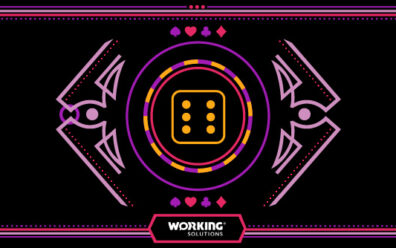AI Enabled CX Contact Center Operations Customer Engagement Customer Experience Customer Service Customer Service Strategy8 Minute Read
From Reactive to Proactive: How to Shift Your CX Strategy for Greater Success
When it comes to customer experience (CX) strategy, the buzzwords these days are all about being proactive. But what does it really mean? How can you make that shift from reactive contact center operations to a more proactive approach that leads to greater success and performance? In this blog post, we’ll explore how exactly businesses can transition from reactive to proactive customer service strategies to deliver better results and brand loyalty over time.

What is Reactive Customer Service?
Reactive customer service is all about responding quickly and efficiently to customer inquiries. This could include everything from responding to a tweet, chat message, or email as quickly as possible, or having agents on hand in live chat or over the phone to answer questions instantly. The goal of reactive customer service isn’t necessarily to solve an issue right away; instead, it’s about providing timely responses that show you are listening and care about helping your customers with their needs.
How Can You Provide Quality Reactive Customer Service?
Providing quality reactive customer service starts with understanding what customers need and want from you. This means being aware of their pain points and finding ways to address them before they become major issues. It also involves offering multiple channels of communication so that customers can reach out anytime they need help or have a question. Additionally, having trained agents who can answer questions quickly and accurately is essential for providing great reactive customer service experiences.
What is Proactive Customer Service?
Proactive customer service involves engaging with customers without waiting for them to reach out first. It is an effort from your end to provide customers with the service they need before they feel the need to contact you. The idea behind this approach is simple — if you go out of your way to meet a customer’s needs, they will be less inclined to approach your team when they have a problem or inquiry. Proactive customer service provides customers with quick and easy access to help and support services, allowing them to get the answers they need quickly and conveniently.
How Can You Provide Quality Proactive Customer Service?
The key to successful proactive customer service lies in understanding who your customers are and what motivates them. Without this knowledge, any attempts at proactive support will likely not meet the desired results. That’s why it’s important to collect as much data as possible about your customers’ behaviors, preferences, and interests—and then use that data when making decisions about proactive outreach initiatives. Additionally, having a comprehensive understanding of your products and services—and being able to anticipate any potential problems—is critical to provide timely solutions before customers encounter issues themselves. Finally, having a knowledgeable team of agents who are empowered to offer personalized solutions based on their training and experience will go a long way towards delivering exceptional proactive customer service experiences.
Proactive Customer Service Strategies
There are several proactive customer service strategies that businesses can use to provide better experiences. Here are some of the most effective ones:
- Automated Messaging: Automated messages are one of the simplest ways for contact centers to reach out proactively to their customers. These can include informational messages about products or services, reminders about upcoming payments/deadlines, etc. Automated messaging helps reduce manual labor while providing customers with quick and accurate information about their accounts or inquiries whenever needed.
- Chatbots: Another great way for contact centers to proactively engage with their customers is through chatbots. There are many chatbot solutions available on the market today that allow businesses to build custom bots according to their specific needs and requirements. With chatbots, businesses can provide 24/7 support services without having actual people manning the phones all day long!
- Follow-Up Calls & Emails: Contact centers can also make use of follow-up calls and emails as an effective way to stay connected with their customers after a purchase has been made or a query has been resolved. These follow-ups help ensure that customers remember who provided great service and were there for them when needed.
How to Shift Your Customer Service Strategy from Reactive to Proactive?
Making the shift from reactive to proactive customer service can be challenging for any business. Here’s how you can make the transition and get your customer service team on board:
- Set clear expectations for what each strategy should look like in practice. Reactive customer service teams should be trained in how to respond quickly and professionally to customer inquiries and complaints, while proactive teams should be focused on anticipating and preventing problems before they arise. Once these expectations are set in place, it will be much easier for both teams to do their jobs well.
- Train your team appropriately to meet those expectations. For reactive teams, this means providing training on how to handle customer inquiries and complaints quickly and effectively without escalating them unnecessarily. For proactive teams, this means teaching them how to anticipate potential issues before they occur and take steps to prevent or resolve them as soon as possible. By properly training your team members on both strategies, they will have the skills necessary to provide excellent customer service no matter what situation arises.
- Encourage open communication with customers so that potential issues can be identified and addressed quickly before they become larger problems. Encouraging customers to share feedback with your business is a great way of building trust between the two parties and can help you identify areas where improvements need to be made for your customers’ experiences with your business to remain positive.
As you make the transition from a reactive to a proactive CX strategy, it’s important for your brand to stay informed about market trends and customer feedback. Businesses who have already adopted a proactive approach have seen great success in their customer experiences, which is why it’s essential to consider the long-term benefits of making this shift. With the right data sources and step-by-step planning, companies can create informed strategies that are focused on giving customers what they want.
Are you ready to take a step towards implementing a proactive customer service strategy? Speak to an expert today and get ahead of the curve!
Discover the Difference →
This Might Interest You...
This website uses cookies to personalize and improve your experience. Continue browsing our site if you agree to our Cookie Policy or feel free to Manage Cookies yourself.


